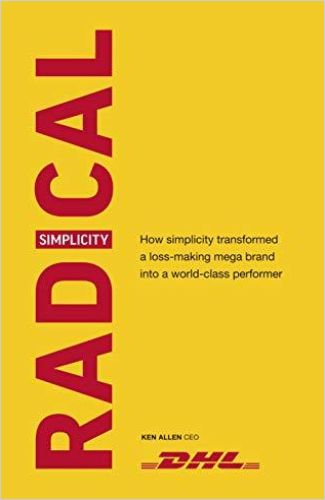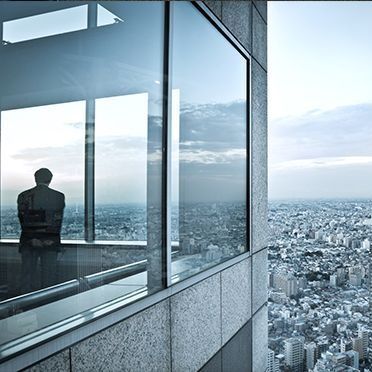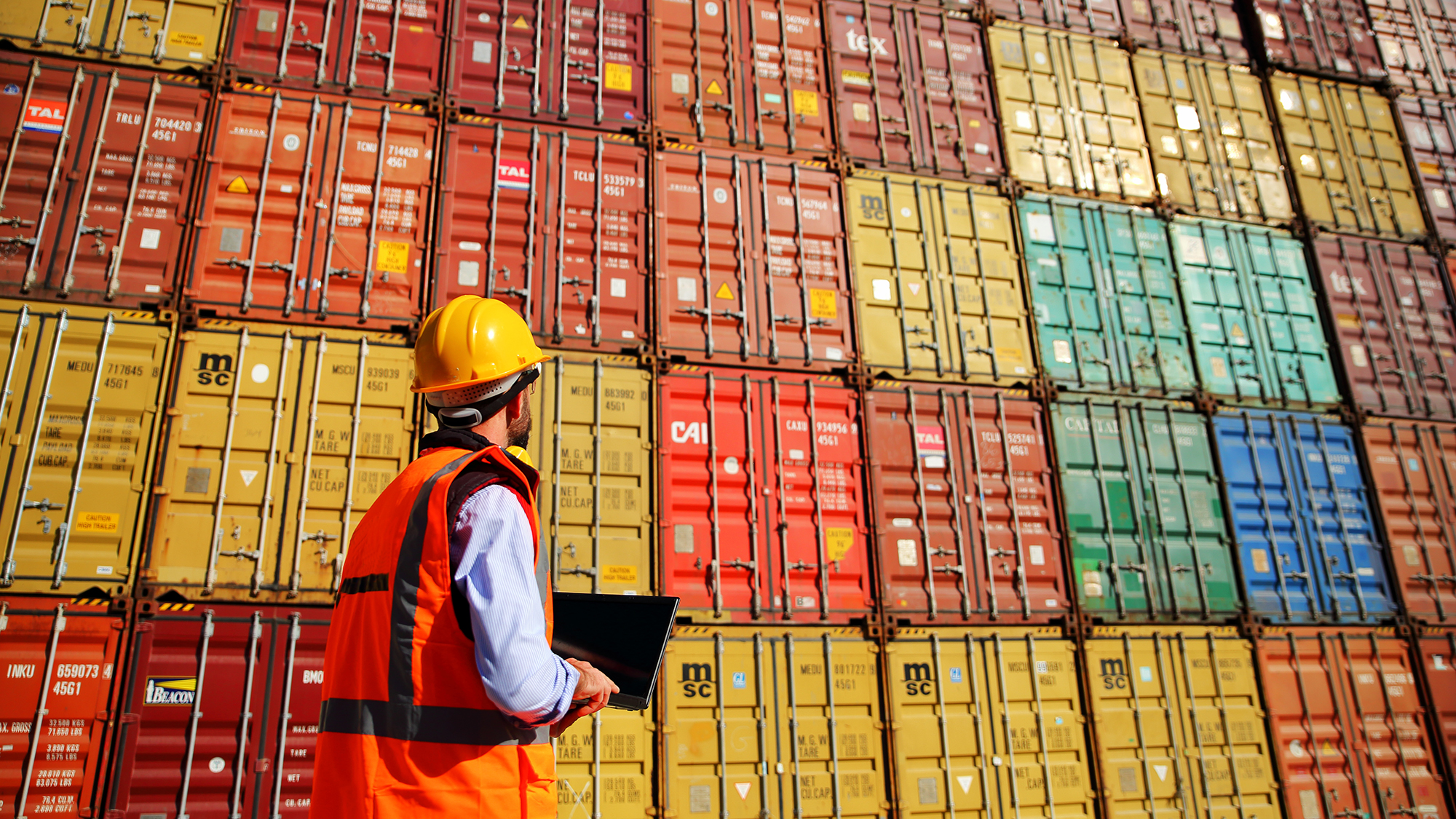“Make Sure You Have 35 Years of Experience. And Not One Experience Repeated 35 Times.”

Ken Allen, what are the books that changed your life?
Ken Allen: Well, the three most influential have a consistent message. First, there’s Mean Business by Albert J. Dunlap. His message is: Business is remarkably simple! Get the right management team, cut costs, focus on the core business and get a real strategy – not one designed by consultants. Focus on a handful of goals. If you set too many, you will fail. Second: How the Mighty Fall by Jim Collins. The main insight from the follow-up of Good to Great is: A good company is more likely to die from indigestion with too many tasks and opportunities than from starvation because of too little. If you want to reverse the decline of an organization, you should be ruthless about what not to do.
Well, we all go to meetings, and we come away with a to-do list…
But we should instead all come away with a to-stop list! You simply can’t focus on many things at the same time.
Many great people in good organizations can’t thrive because they have too much on their plate – and in too many companies, this defines how ‘things are done’ in general.
Ken Allen
You lose time waiting for time slots to deal with a problem yourself, and everyone else is waiting for you. The same applies to the next step after you delivered. Execution becomes a waiting game, and even the best managers cannot change that, because it’s just company-wide bureaucracy. So, third, Execution by Larry Bossidy and Ram Charan.
Its main takeaway?
An astonishing number of strategies fail because leaders don’t make a realistic assessment of whether their organization can execute their plan! And realistic assessment here means: You always have to make sure that there are the right people in the right places to perform. Over 90% of CEOs that lead companies from good to great, according to Collins, come from inside their organizations. Find them – or hire people who might replace those who currently occupy key positions without taking responsibility.
If it was just up to you, how would you select leadership and board personnel?
People with experience understand what the business is about, and what differentiates it from others, by creating superior value and moving forward. Too much advice from outside is biased by theory. And there is a good chance you’ll miss opportunities if you only listen to the best consultants. So, when I have to decide how to develop a specific leadership position, I usually don’t hire new personnel – I train and empower my existing people. I am looking for people who get things done, especially those who volunteer to jump into something if there is a problem. Secondly, I always look for people who are in touch with our customers.

To turn around DHL’s Canadian operation from a CA$45 million loss into a CA$12 million profit, you were at the front lines yourself, riding in trucks and handing out shirts to get drivers to rebrand the company more quickly. In a nutshell: You were out in the field, not “behind a desk,” as you write. Is this what you mean?
Yes. In most businesses, the people talking to customers regularly are at the business’s front line. And people who want to understand the business and execute can go out to those people, talk to those people and see what kind of issues the customer is facing. The purpose of every business is to solve a customer’s problem. If the customer is the center of your culture, everybody is a salesperson. At the end of the day, it’s not the company or your boss who pays the bill. It’s the customer.
Your book Radical Simplicity is all about building this customer-centric culture. Was there a decisive moment that gave the impetus to change DHL culture – radically?
When I came to DHL Canada, I spent at least one day in customer service each week to uncover our structural problems. I got to know new problems on a weekly and daily basis – and tried to solve them.
My advice? First, you just have to listen! The second: Don’t hold on to a problem! Don’t worry about bureaucracy: Escalate the problem as soon as you can to the person who can get it fixed!
Ken Allen
In many cases, that’s not your supervisor – who might report it to the country manager and so on. No, no, no! Fix it.
Can you explain this in more detail using an example?
The central hub we were running in Canada back in the day eventually ran into IT problems. I remember saying to the supervisor: “Here’s my mobile number. Next time you run into these problems, give me a call.” And one day, maybe 12:30 in the morning, my cell phone rang. So, I drove to the hub, started talking to one of the frontline IT staff, and tried to find out the problem. The hub manager then arrived, accompanied by the IT manager, and they were very upset about my presence. “Why are you here? This is our job,” they told me. And I answered, “Listen. First of all, I am here because what’s happening here impacts our customers. And secondly: I am the country manager. It’s my job to be where there is a problem.” (Laughs.)

Things like this happened to me many times, and I learned that in many cases, it simply does not matter who is in charge according to your guidelines. What matters is that a problem gets fixed. And if you are successful in establishing a culture that enables people to raise issues and fix them as soon as possible, corporate success will come.
Usually, people rely on hierarchies in organizations. As long as they are structured in a useful way, deviating from it can cause as much trouble as blind obedience, don’t you agree?
That’s right to some extent only. Yes, bureaucracy to entrepreneurs always sounds like an awful word, but in reality, it’s the chain of command and all these things – and they are necessary. That’s why it’s so incredibly important that everyone in your organization is well trained and knows when it’s time to ignore the chain of command for the better. You can’t expect anybody to know all IT systems or every detail of the aviation network – but they should understand why they exist and how those parts of an organization work together.
Can you give an example?
When we started and tested our training program, Certified International Specialist, a lot of our specialists for pickups and deliveries approached me and said: “Ken, I sometimes scan the same shipment six times – that makes no sense to me.” So we built into the training scheme a whole schematic of what use these scans are. They then saw that we tried to find out with each scan by each courier in the country where possible quality problems occurred. Where are the actual stand times? Where did we expect them to be? This way, we gathered quick and – compared to other ideas – non-bureaucratic insights that were pretty useful to adjust our systems, even if our frontline people thought we were putting unnecessary burdens on them. Bureaucracy sometimes depends on the view. When people understand that, they go along with doing. In a nutshell: If you want to bust bureaucratic burdens – which I’d always advise to do – you have to train people better. For example, and as you know, all DHL employees have access to getAbstract via our My Talent World Learning Platform. So they can download and read summaries of relevant business books and articles, which helps them stay up to date with key knowledge and trends in our fast-paced business environment. They simply have to know what their role is and how it impacts the customer.
So, the command-and-control world is part of the past?
Indeed, today’s businesses rely on coaching and asking for feedback. It’s as simple as that.
You write that simplicity is one of four “lenses” or approaches companies can use to guide their actions strategically. The lenses are represented by the acronym “SELF Reflection”: Simplicity, Execution, Leadership and Focus. The people looking through these lenses in different departments of the company rely on each other’s work. What is the biggest in-house obstacle on the road to this kind of organization?
Usually, you’ll find many entrenched managers who have always done things the same way and cannot adapt to a new company culture telling them to change. They grew up in the command-and-control world, and some of them actually may be great managers who get things done – but they struggle with a more development-centered culture. You’ve got to make sure they understand that the organization changed. The best way to do that, in my opinion, is to make sure that the people who took that change decision stand in front of these managers and act accordingly. At DHL, we and the change managers trained the other managers ourselves.
When my board and I go to a site, we sit down with customer service, and we talk to people at the front line – we don’t sit behind a desk and fire people randomly.
Ken Allen
If we live that culture, and when those managers see us doing so, they have no doubts about a new cultural alignment.
The real proof is a business success following the transition period. But this may take some time. Are there any early indicators?
Sure. The first thing our customer support mentioned is deeper trust among our partners. They simply did not have to tear down walls anymore – other companies turned towards us and asked for fostered relationships and new projects. Then HR got great news: We moved up the most renowned HR assessment, Great Place to Work, ranking among the 10 best places to work in the world in 2018 – and this year, 2020, DHL ranks second. Which indeed is one of the most outstanding achievements you can get. If you have credibility and training in place, success follows.
DHL is committed to this strategy worldwide, and you have worked in many places yourself: What about intercultural misunderstandings when it comes to implementing this strategy?
Well, first, we are much more alike than we are different. And a multinational logistics company may have even more proof of that than other global players. The striking thing about DHL and its success is that from the beginning in 1969, the company had a customer focus and a certain sense of entrepreneurialism. A global idea was already behind it. The company then gradually expanded worldwide, but with no money – so the founders were forced to find local partners on all continents and in all countries. To work with DHL, these partners had to share the idea, see the opportunity – and have a similar culture. Whether you go to Japan, to Singapore, Johannesburg, Rio, New York, London or Berlin today, where we operate, people share the founder’s ideas, they share a culture, they believe in this company and its values – you can see and feel that.
But this certainly does not apply to all business ideas and models. And even DHL faced backlash.
To tackle differences from the functional point of view, you have to make sure that you are very disciplined with focus and the brand’s usage. For example, when we train different people on different continents and foreign countries, we always ensure that the communication is evident and measured. To do so, you can’t just hand out poorly translated guidelines and send them around, hoping that someone somewhere might guess the intent. Many companies don’t even bother about culture or language, not to speak of style and tone: They hand out their English version. We decided: No. We have to take our time to find local specialists to translate what we want to get through in a way that resonates with people from these specific cultures. What we say stays the same, but how we say it depends. This applies not only to our training, but it also applies to all crucial communication.
What about external shocks that can occur suddenly – like the current pandemic and its effects? Look at what happened in 2020 after your book was published: On the one hand, COVID-19 has made secure supply and logistics chains even more critical. On the other, DHL’s system was put to a stress test because you had to ensure that your values stand during times of rapid change. How did DHL react to the crisis – and why?
From a leadership point of view, it was very humbling, and also very gratifying to see that, because of the training we are giving to all our people, and because of the resources we put into development, we were very fast when it came to managing remotely. We were not allowed to travel to our business’s places and front lines as we used to before, so we relied on our local people. To provide them with what they needed, we established a global COVID taskforce to help quickly supply all the health gear and personal protective equipment to the front lines. It was crucial to be able to keep up services.
We drew all division heads in every country together to get a consistency of messages regarding advice on how to tackle the virus’s spread: Do the distancing! Wear your mask! Wash your hands! And our people stepped up to the plate.
Ken Allen
What does that mean in concrete terms?
They dealt with all these issues. They built new relationships. Take the governments, for example: In the first instance, India and Spain did not see the logistics industry as an essential service when going into lockdown. So we started crucial conversations to clarify that, especially when people have to stay home, they rely on delivery to their homes and businesses. Spain and India realized that the importance of logistics grew even more with these lockdowns and new restrictions. The numbers reflect that: As of today, our business grew 25% to 30% compared to last year. We maintained control of our divisions, airlines and facilities. That’s why we flew select flights to deliver masks worldwide, first bringing them from the source in China to their destination countries, and then providing them for customers at home. It’s a lousy situation for the world. I totally agree. But speaking for DHL and the logistics business, this had some positive effects.
Are you prepared to distribute the vaccine worldwide when it is ready? The transport of these vaccines is, in many cases, unique: It has to be cooled, and the whole world relies on these cooling chains and those millions of doses delivered on time.
Yes. When the vaccine is available, we’ll have to deliver it frozen at around -70°C. So we read our white papers, we are working with several governments and advisers – and yes, we are preparing, and when it’s available, we’re ready to help eradicate the problem. I am sure the whole logistics industry will, once again, play a crucial role in this. The outlook today is quite positive. But personally? I mean, I hate the situation. I am in Belgium at the moment, and we have a curfew at 10 p.m. And I am telling everyone that he last time I had a curfew at 10 p.m., I was nine years old! (Laughs.) I understand people’s frustrations.
You started working for DHL in Bahrain in 1985, moved to work in Saudi Arabia, Egypt and Yemen, and helped establish DHL in Libya. The next destinations were Asia, then Canada in 2005, the USA, then becoming member of the global DHL Board of Management in 2009. You’ve been with the company for 35 years now, and that fact is very unusual these days: Why have you always remained loyal?
First of all, I am from an older generation and started working in 1971 when I was only 16. I met many people from DHL before, and I had a good relationship with them. They were always “different” and had this entrepreneurial spirit. That’s what attracted me. I was looking for progress to learn something new. Today, looking back, the decision to go there was right. So what I always tell people is: “Make sure you have 35 years of experience. And not one experience repeated 35 times.” And second: Loyalty is a two-way thing. Corporations have to keep growing. But to do so, the organization’s people have to have the opportunity to grow in the first place. Without a learning culture, you won’t grow as a company. My experience is:
People will stay loyal if they have the opportunity to develop and to gain expertise. That’s what happened to me. In a stagnant organization, people get bored. They will then look for something else.
Ken Allen
What does it take for a company to have (and keep) such loyal leaders? What are the do’s and don’ts here – and how did they change throughout these years?
It pays off to keep everyone loyal. When people leave your organization after, let’s say, 20 years – they take 20 years of experience with them, and it will never come back. At best, you can make that loss up within a couple of years, but no one will ever fill this exact gap, if the person was great. It’s costly. A company relies on expertise, well trained and highly motivated people, to deliver quality.
And what advice do you have for job seekers?
If you’re young: Go to university! And when you have your degree, decide on a company where you like the culture. When you walk in for the first time, look at the people, try to feel the spirit – and if there is none, leave. You have to feel comfortable to achieve outstanding results. And employers who don’t care for providing this comfort will be out of business sooner rather than later.
About the Author
Ken Allen was a CEO at DHL. Allen was born in Yorkshire, England. His father was a coal miner. Allen started working for DHL in Bahrain in 1985. In 2005, DHL moved him to Canada, where the company ran third behind FedEx and UPS. Allen transformed DHL in Canada and the US, and became member of the global DHL Board of Management in 2009. He’s the author of Radical Simplicity.












